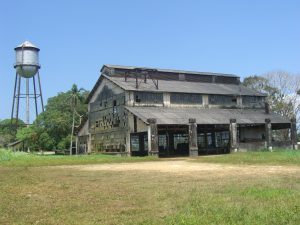7.4 Supply Chain Design
Supply chain design is a strategic decision that determines various entities’ roles, responsibilities, and geographical locations within the supply chain network. Companies adopt different supply chain structures to align with their business objectives and customer preferences. For instance, Walmart traditionally relied on brick-and-mortar stores to serve customers, while Amazon has leveraged an online platform to direct shipments from distribution centers.
Balancing Efficiency and Responsiveness
When designing a supply chain, two critical factors must be considered: efficiency (cost reduction) and responsiveness. The balance between these two factors varies across companies, depending on customer preferences. If customers are willing to wait 5-7 days for online orders, a company can consolidate inventory in fewer locations and leverage longer transportation times. However, if customers demand immediate product availability, the company may need to establish multiple retail locations and maintain sufficient inventory at each site to respond promptly to customer needs.
Vertical and Horizontal Integration
Companies can choose to outsource certain supply chain functions or maintain control over various stages through vertical and horizontal integration strategies.
- Vertical Integration: Vertical integration occurs when a firm owns more than one portion of its supply chain. For a manufacturer, this could involve owning distributors or retail stores for forward integration (reaching end-consumers directly) or acquiring suppliers for backward integration (controlling the sourcing of materials or components).
- Horizontal Integration: Horizontal integration involves a business expanding its holdings by acquiring or merging with another firm operating in the same market. Examples include the 2015 merger of Kraft Foods and Heinz, and Marriott International’s acquisition of Starwood Hotels in 2016.
Tailoring the Supply Chain Design
By carefully designing their supply chain structure, companies can optimize operational efficiency, enhance responsiveness, and align with customer expectations. This strategic decision involves evaluating factors such as product characteristics, market dynamics, and competitive landscape, ultimately shaping supply chain entities’ roles, responsibilities, and locations to achieve a competitive advantage.
Examples

Ford’s Vertical Integration Strategy
In the early 20th century, Ford Motor Company embarked on a strategic vertical integration approach surrounding its Highland Park Plant. This complex included a power plant, machine shop, and foundry, enabling Ford to consolidate various stages of automobile manufacturing under its control.
By the 1920s, Ford had acquired a rubber plantation in Brazil, coal mines in Kentucky, timberlands and iron-ore mines in Michigan and Minnesota, a fleet of ships, and a railroad. These efforts aimed at vertical integration ensured a reliable supply of raw materials and parts, guaranteeing a continuously operating assembly line.
Ford’s vertical integration strategy secured the necessary resources for production and enabled the company to profit from multiple processes involved in automobile manufacturing. This approach gave Ford greater control over its supply chain, reducing dependencies and enhancing operational efficiency (Parkhani, 2019; Stanford, n.d.).
Netflix’s Backward Vertical Integration

Netflix exemplifies a significant backward vertical integration strategy in the entertainment industry. Initially, Netflix operated at the end of the supply chain as a platform for distributing films and TV shows created by other content creators.
While this business model was profitable, Netflix’s leaders recognized the potential for greater revenue generation by creating their own original content. This strategic move would reduce their reliance on external content creators and cater to the growing demand among subscribers for original programming.
By leveraging their existing distribution platform, Netflix could effectively promote and deliver their original content to a captive audience. This backward vertical integration strategy has become crucial for Netflix’s continued success as more film studios terminate their licensing agreements with the streaming giant. The company’s original content has become a primary attractor for new subscribers, solidifying its highly competitive entertainment industry position.
Both examples illustrate how vertical integration strategies, whether forward or backward, can provide companies with greater control over their supply chains, secure access to critical resources, and create opportunities for revenue diversification and growth (Quain, 2018).
“4 Supply Chain” from Introduction to Operations Management Copyright © by Hamid Faramarzi and Mary Drane is licensed under a Creative Commons Attribution-NonCommercial-ShareAlike 4.0 International License, except where otherwise noted.—Modifications: used section Supply Chain Design, some paragraphs rewritten; added additional explanations.

